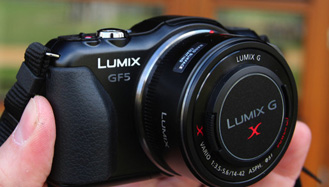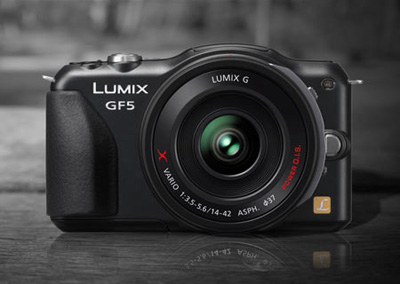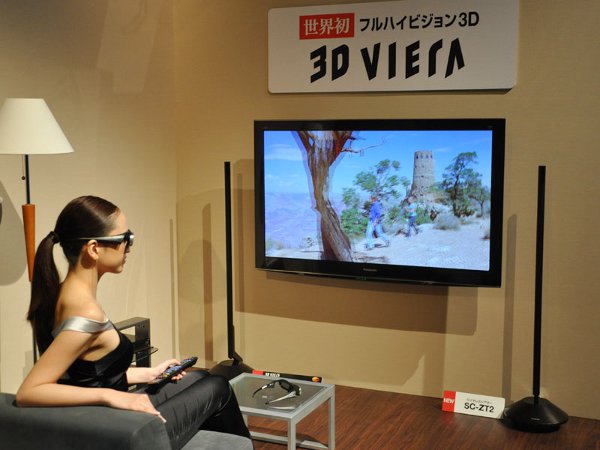
The company Zacuto USA conducted a study in which nine compared high-resolution cameras to determine the best option. The study took place attended by many filmmakers, including Francis Ford Coppola, director of the immortal Godfather and uncle of Nicolas Cage. The result of the project has exceeded all expectations, the best was not the most expensive camera.
Continue reading Professional filmmakers have chosen a better camera
Tag Archives: Panasonic
Choosing a Digital Camera: Zoom Types
Digital cameras, even the compact budget variety, probably have a zoom feature. You may understand that “x4” zoom mean that the zoom will move in towards the point you have aimed at, four times as close. But do you know the difference between “optical zoom” and “digital zoom”? Some of the better manufacturers explain what this is in their sales pitch for their particular cameras, others are silent. It can be a crucial thing in deciding what camera to buy, so be armed with this information before you go shopping!

Like with video cameras, digital cameras measure zoom by magnification factor. As I’ve already said a camera with 4x or 4 times zoom magnifies the image by a factor of four. This does not mean that your subject will appear 4x larger than it does to the naked eye but that it will appear four times larger than it does in the natural, original “unzoomed” lens position. In fact most compact digital cameraswill have a starting lens position that makes the subject appear further away that it does to the naked eye. This allows you to fit more into your shot. It’s a sort of mini-wide angle starter.
Optical Zoom
Optical zoom magnifies the image using the cameras optics. That’s the lenses. This means that light is passing through curved glass which in turn makes your subject look bigger in your photo. The actual quality of the magnified image depends on the quality of the lenses and coatings on those lenses. Optical zoom is the traditional kind of zoom and can produce extremely sharp images. It’s been around since well before digital cameras.
Digital Zoom
Digital zoom appeared much more recently than optical zoom. Firstly on video cameras. I had one on my very first primitive camcorder and found that the zoom was disappointing though because the quality of it was so low and grainy. That is because digital zoom produces magnification by cropping the image and up-sampling the cropped portion. The result is a loss in quality. This is because cropping reduces the number of pixels used which you can see as a blocky or blurry looking image. The more you zoom in, the fewer pixels are used to make the image, reducing quality. So digital zoom is rubbish right? Well, no, not now.

With the advent of digital photo cameras, digital zoom has become somewhat more useful. Here’s an example. You’ve taken a picture of the Taj Mahal from a distance, but want to check that you haven’t got a car park just away to the side, or a plane flying by in the distance in the top left corner. You can use the digital zoom to zoom up on it on the cameras screen. This will bring into clear sight portions of the photo. Using the digital zoom permits you to look closer at the photo and reshoot if necessary. Note that using the digital zoom to zoom up on a photo after you took it does not reframe or permanently zoom up on that photo. It is just a tool to let you see it more closely. So- yes, look, there was a plane at the top left of the Taj Mahal. Take that photo again!
Now that you know the basic difference between digital and optical zoom, the question is how much zoom do you need? If price weren’t a factor, some may assume that the more zoom you have, the better. Not necessarily. A big zoom may mean that for the reasonable price, they will have cut corners elsewhere. Most people take pictures of their friends and families. When taking photos of this kind of subject, rarely will you be zooming up from far off. In fact you’d probably do better with a camera that has a wide-angle lens, to get more of them in the shot, especially when shooting indoors. How many times has that cry gone out when trying to take a picture of everyone sitting down at the dinner table.. “Move in closer- I can’t get you all in!”

Where a powerful zoom does come in handy is when shooting vacation photos or photos of recitals or other events where you can’t physically move closer. Most digital cameras on the market today have a 3x optical zoom. This amount of zoom fits with the needs and budget of most digital camera buyers. It is now possible to get cameras with optical zoom as powerful as 15x or more. While these can be very appealing, be aware that you are sacrificing some sharpness in order to get the versatility of a lens with such a large zoom range.

Another potential downside to buying a camera with a powerful zoom is that these cameras tend to be much larger and heavier. So if having a slim pocket digital camera is important to you, you’ll probably have to forget about getting a powerful optical zoom. Most small cameras max out at 4 or 3x zoom.
As for how much digital zoom you need? Well mostdigital cameras being produced today have more than adequate digital zoom. No issue.
Just remember that the optical zoom is truly the important specification to look for. Now zoom off and start looking for your perfect camera!


For more information on digital cameras visit:http://all-cameras.com/
Panasonic Lumix G Vario 12-35mm F/2.8 X

Panasonic has a little mini-cati announce its new target destination devices Micro4 / 3 with the Lumix G Vario 12-35mm F/2.8 X. As you can see is a constant aperture zoom and bright as it opens at F/2.8. This is a 24-70mm equivalent in 35mm and it offers optical stabilization not to mention a development obviously very quiet, all in a weight of 300g. Count still € 1099 to the end of summer 2012.
Panasonic micro P2 a beautiful card and real

When it comes to flash memory card platforms, there are different formats among which to choose. And today, Panasonic has developed the map microP2 for professionals who seek nothing else but that which is done best in terms of speed of data transfer. To ensure that this card will be compatible with a wide range of other devices, Panasonic has also provided an adapter to carry everywhere (with a firmware upgrade), and will allow the new card microP2 to be compatible with any equipment based on the PCMCIA. For now we do not know when does the new card will be available microP2 Panasonic, but it is likely that it makes its appearance in spring 2013 (yes, a good year to wait … so be patient) . Now the question is whether the format microP2 will one day be widely adopted by all manufacturers. But even where it is practical, I do not think it will eventually replace the old Sony Memory Stick that we all know about you, what do you think.
Lumix GF5, the new ultra-compact interchangeable lens Panasonic

Panasonic unveils the Lumix GF5, designated successor GF3. The manufacturer claims a general improvement in performance via a new sensor and a newly developed image processing, all in one volume still low.
Fewer than one year after its release the Lumix GF3 sees his successor arrived. Panasonic unveils its latest indeed compact interchangeable-lens format micro 4/3 Lumix GF5. In an area still very small: 107.7 x 66.6 x 36.8 mm, making it one of the camera more compact hybrid market, the GF5 proposes a new CMOS sensor 12.1 megapixel and Venus True picture Quality Engine, its new processor image processing. A flash is always integrated in the housing.
In terms of picture quality, Panasonic puts GF5 between GF3 and GH2. The combination was new sensor and processor image processing must improve the management of noise. The sensitivity range extends from 160 to ISO 6400, expandable to ISO 12 800. The manufacturer also puts forward an ultra-fast autofocus system, measured at 0.09 seconds.
Like its predecessor, the GF5 has a touch screen of 3 inches (7.6 cm) of a definition of 920 000 points. The interface evolves. All functions are now accessible via the control buttons and the touchscreen. We also find the opportunity to choose the area of development by tapping, as well as triggering. An explanatory guide is also displayed to describe the mode of shooting, and assist in the selection.
The GF5 also opens the possibility to choose the wallpaper of the interface among those offered by Panasonic, or from photos stored on the memory card.

Video is also still to go with the Full HD (1920 x 1080 pixels) at 50 frames per second interlaced, you have to go in 1280 x 720 pixels progressive mode to benefit. in format, it’s still AVCHD.
The design is generally similar to that of GF3, well-rounded. CNET was able to quickly get close: take hand improves significantly by the addition of rubber on the front of the case, then the finger or just relax.
Announced the end of May, the Lumix GF5 is positioned to € 699 with motorized lens 14-42 mm X. Count € 549 with the standard 14-42.
Parallel to the cabinet, Pansonic has a set of optical adapters. The goal: increase the possibility of field shooting without having to invest in more expensive targets. This set consists of a wide angle, a telephoto lens, a macro and a fisheye. They are respectively provided to 129 €, 129 €, 99 € and 149 €. A pack containing the optical adapters macro, wide angle and fisheye will be offered at € 329.
The New Technology Panasonic VT30 Series

The New Panasonic 3D Viera series of 3D TVs are renowned for their amazing color quality and the depths of their blacks. There also known for their ability to cut down on what is known as cross talk or ghosting of 3D images. Continue reading The New Technology Panasonic VT30 Series
The New Panasonic Viera VT25 3D

The Panasonic Viera VT25 3D a reality at CES 2010, and this time around, it hasn’t failed to deliver. The company’s Viera VT25 displays are the only plasmas on our list, boasting native contrast ratio and new phosphor technology that allegedly allows for quicker image switching a necessity for 3D. Panasonic will ship in the Spring of 2010 four VR25 series Plasma HDTV Continue reading The New Panasonic Viera VT25 3D

